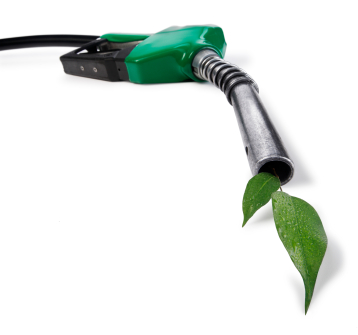The threat to sustainability from the use of fossil fuels
 Market failure exists when the production or use of a good or service results in an externalities and welfare loss, because the market does not direct an efficient amount of resources into the production, distribution, or consumption of a good.
Market failure exists when the production or use of a good or service results in an externalities and welfare loss, because the market does not direct an efficient amount of resources into the production, distribution, or consumption of a good.
Fossil fuels are non-renewable resources as they take millions of years to form and accelerating overuse is leading to their rapid depletion. The principles of supply and demand mean that as fossil fuel supplies diminish, prices rise. However, since the producers and consumers of fossil fuels do not have to account to later generations for their overexploitation of resources, fossil fuels are over-produced, and over-consumed despite their increase in price.
The over-production and overuse of fossil fuels raises environmental as well as economic concerns, since coal, petroleum, and natural gas contain high percentages of carbon; the burning of which generates greenhouse gasses (GHGs), such as Carbon Dioxide (CO2 ) contributing to the process of global warming. Although there is much argument about the extent to which the human activity contributes to climate change, the effects of climate change are undisputed, leading to increases in average temperature, altered habitats, extreme weather conditions, sea-level changes and flooding.
There are huge external costs linked to these environmental changes. As temperatures increase and rainfall patterns change, crop yields are expected to drop significantly in Africa, the Middle East and India. Water availability for irrigation and drinking will be less predictable, because rain will be more variable and droughts more frequent, creating pressure on agricultural production and diversity. Up to three billion people could suffer increased water shortages by 2080. Air and water pollution resulting from the extraction and use of fossil fuels can lead to significant health and environmental problems.
The economic consequences are significant. All businesses need resources - both raw materials and energy. As reserves of both are under strain, world prices are increasingly volatile. National and international commitments to reduce carbon emissions, are forcing governments to examining the balance of their energy production and consumption, exploring ways to reduce the use of fossil fuels if possible, to be replaced by alternative cleaner technologies. With the rapid economic growth in the emerging BRICS economies (Brazil, Russia, India, China and South Africa), demand for raw materials and energy is outstripping supply and countries around the world are beginning to position themselves to protect their strategic interests.
The state of oil and natural gas production, in particular, is causing alarm. Oil production peaked during 2006 with global oil production from mature oil fields now declining at a rate of between 6-7% per year. Oil is becoming more difficult, expensive and energy intensive to extract. The Peak Oil Crisis website has real time clocks of global oil consumption and graphics illustrating the impending crisis as well as articles, graphics and links to industry articles. Countries reliant on oil imports are desperately seeking new oil and gas sources with global oil companies seeking out previously untapped reserves in the remotest of regions.
The Artic is one of the regions that likely to become an economic and realpolitik battleground, almost certainly pushing ethical, environmental and moral considerations aside in the drive to its natural resources. It has been stated by industry experts that another 5 million barrels of new oil per day must come on line per year to meet global demand. A 2008 United States Geological Survey estimated that areas north of the Arctic Circle have 90 billion barrels of undiscovered, technically recoverable oil representing 13% of the undiscovered oil in the world. In addition to the size of the untapped resources, environmental factors are driving moves to develop the Arctic region. In the past, the Northwest Passage connecting the Atlantic and Pacific Oceans through the Canadian Arctic Archipelago, has been virtually impassable, because it was covered by thick, year-round sea ice. However, satellite and other monitoring confirm a progressive, year-by-year decline in the thickness and extent of Arctic sea ice.
There is general insecurity about oil supplies in many regions. Asia, for example, only holds about 1% of the world's proven reserves of oil and gas. Oil prices are predicted to rise abruptly with apocalyptic predictions about a collapse in oil production by 2015. Asian countries, such as Japan, South Korea and India, are buying and storing crude oil in unprecedented quantities. China is planning to increase its reserves to 90 days consumption by 2020 and Singapore, preparing for the looming oil crunch, is racing to complete a series of vast man-made caverns beneath the seabed of Banyan Basin, which will include a vast oil storage complex. The first two caverns providing 480,000 cubic metres (m³) of oil storage will be constructed by 2013. Three more caves are planned, which would store enough oil to last Singapore a month.

